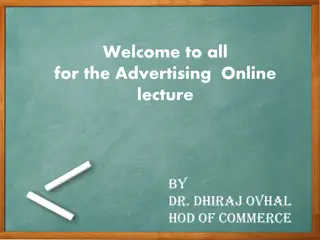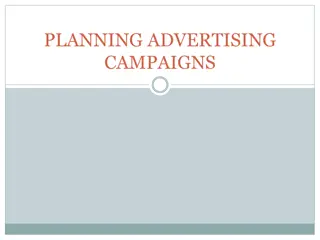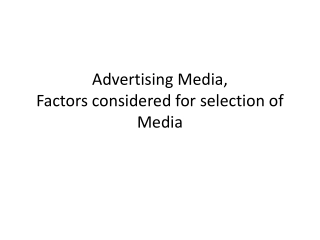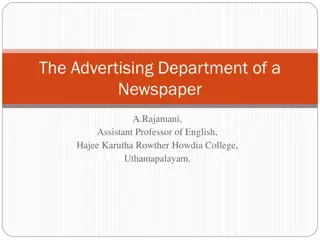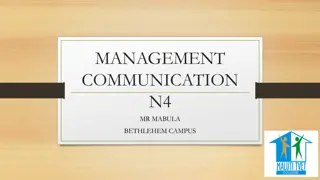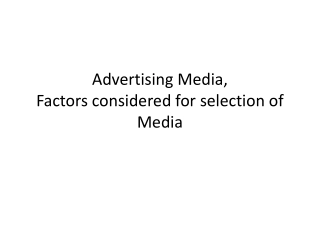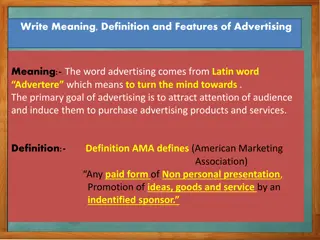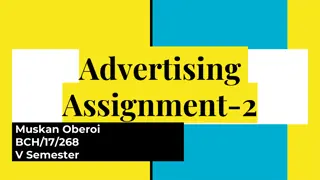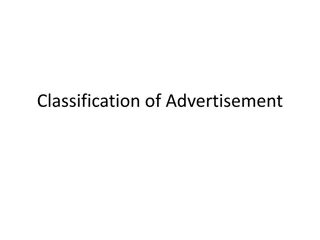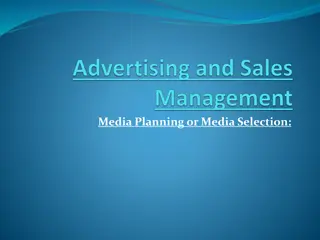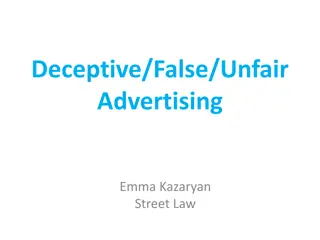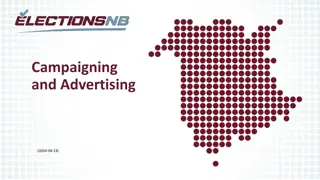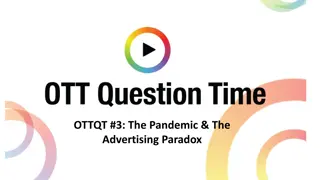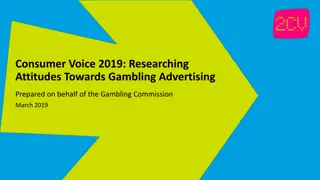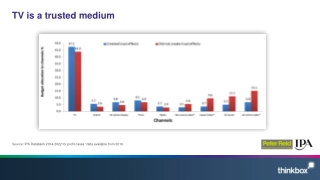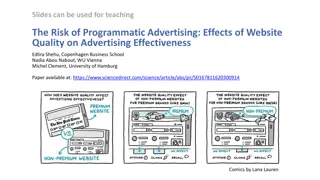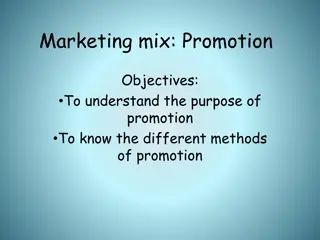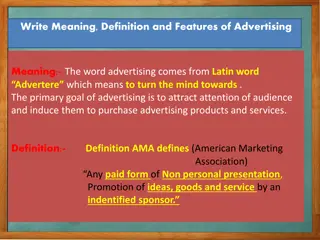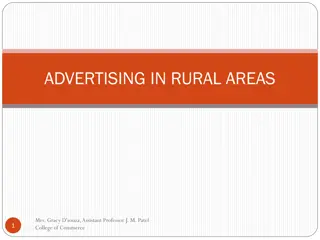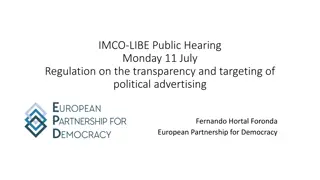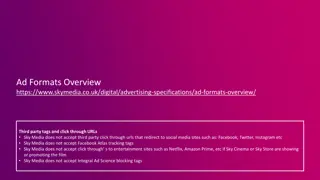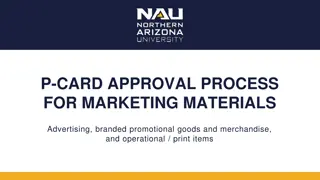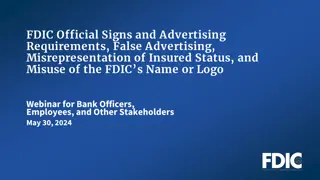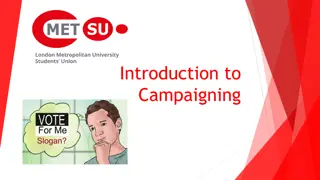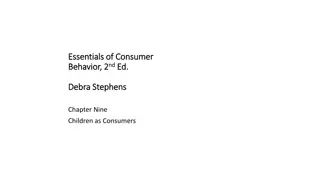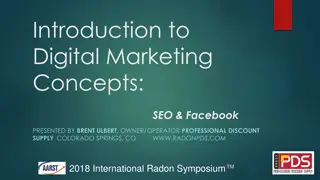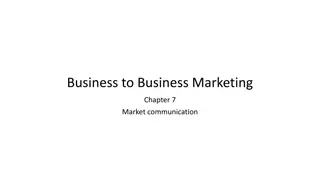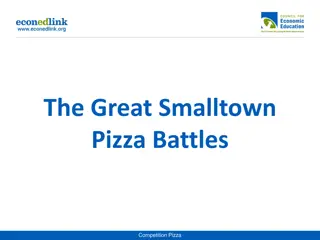Understanding Effective Advertising Strategies
Famous people, experts, ordinary individuals, sensory appeals, emotional connections, and strategic word usage are all key elements of successful advertising campaigns. Advertisers leverage these tactics to grab attention, build trust, evoke emotions, and influence purchasing decisions. By employing various strategies such as celebrity endorsements, expert recommendations, relatable storytelling, sensory triggers, emotional appeals, and carefully crafted messaging, advertisers aim to connect with consumers and compel them to engage with their products or services.
Download Presentation

Please find below an Image/Link to download the presentation.
The content on the website is provided AS IS for your information and personal use only. It may not be sold, licensed, or shared on other websites without obtaining consent from the author. Download presentation by click this link. If you encounter any issues during the download, it is possible that the publisher has removed the file from their server.
E N D
Presentation Transcript
Did You Get the Message? Advertising Strategies
Famous People Advertisers use famous people to grab your attention. Advertisers also think you will want to buy a product because it is associated with or recommended by a famous person. Winning athletes are often used to promote sports clothing and equipment. A movie star might be shown driving a new car. Popular musicians are common in soft drink commercials.
Experts You have probably seen an ad where a dentist or an actor playing a dentist tells you which toothpaste to use. Other commercials claim most doctors prefer one medicine to other medicines. Advertisers think you are more likely to trust a message delivered by an expert.
Ordinary People Have you ever seen an ad in which ordinary people tell why they liked a movie as they were leaving the theater? Or an ad featuring a mom who tells how clean a laundry detergent got her family's dirty clothes? Advertisers know that some people are more likely to believe a message when regular people are the messengers.
Appealing to Your Senses Music, sound effects, color, and images One example is the Nike swoosh that also serves as the company s logo. The color pink which is used to help promote products related to breast cancer. Advertisers like to use something that triggers your mind to automatically think of them or their products when you see or hear it.
Emotional Appeal Funny or emotional stories: Advertisers like to connect with your emotions. If their commercial can make you laugh or feel some other emotion, it can motivate you to buy their goods or services. Some advertisers might even use fear or a sad story as an incentive. Focusing on your emotions can be a powerful strategy.
Words and Claims The exact wording of an advertisement or the claims of what the product will do can influence you to buy certain products. The federal government, however, requires advertisers making such claims to have proof of their results or guarantees. Results can be monetary or non-monetary. The puffin video had non-monetary outcomes (getting to drink a Coke). An advertisement announcing a lower price or special deal that saves you money would be monetary. Whatever words are used, advertisers are aware of their potential impact on your decision to buy their goods or service.


